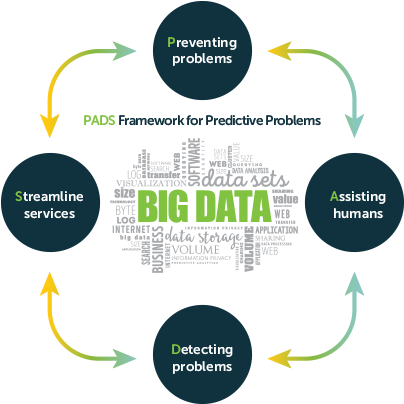The Role of Big Data in Predictive Analytics

Big data plays a central role in predictive analytics by providing the raw material needed to build accurate predictive models and make informed decisions. Here's how big data contributes to predictive analytics:
Data Collection: Big data encompasses vast volumes of structured and unstructured data from diverse sources such as social media, sensors, transaction records, web logs, and more. This abundance of data provides a rich source of information for predictive analytics, allowing organizations to gather insights from a wide range of sources and data types.
Data Preparation and Integration: Big data technologies and tools enable organizations to collect, store, and process large volumes of data efficiently. Data preparation and integration processes involve cleaning, transforming, and harmonizing disparate data sources to create a unified dataset suitable for predictive modeling.
Feature Selection and Engineering: Big data analytics techniques such as machine learning and artificial intelligence (AI) enable organizations to identify relevant features or variables that contribute to predictive accuracy. Feature selection and engineering techniques help organizations extract meaningful insights from big data and uncover patterns, relationships, and trends that drive predictive models.
Model Building and Training: Big data provides the foundation for building and training predictive models using advanced analytics techniques such as regression, classification, clustering, and neural networks. Organizations can leverage big data platforms and distributed computing technologies to process large datasets and train complex predictive models capable of making accurate predictions.
Model Evaluation and Validation: Big data facilitates the evaluation and validation of predictive models by providing access to extensive datasets for testing and validation purposes. Organizations can assess the performance of predictive models using techniques such as cross-validation, holdout validation, and A/B testing to ensure their accuracy and reliability.
Real-Time Prediction and Decision-Making: Big data enables organizations to deploy predictive models in real-time or near real-time environments, allowing for timely and actionable insights. By integrating predictive analytics into operational systems and business processes, organizations can make data-driven decisions, automate decision-making processes, and optimize outcomes in various domains such as finance, marketing, healthcare, and manufacturing.
Continuous Improvement and Optimization: Big data analytics facilitates continuous improvement and optimization of predictive models through iterative processes of model refinement, retraining, and performance monitoring. By analyzing feedback data and monitoring model performance over time, organizations can identify opportunities for optimization, address model drift, and ensure the ongoing relevance and effectiveness of predictive analytics solutions.
In summary, big data plays a fundamental role in predictive analytics by providing the data infrastructure, computational resources, and analytical capabilities needed to build, train, deploy, and optimize predictive models. By harnessing the power of big data, organizations can unlock valuable insights, drive innovation, and gain a competitive advantage in today's data-driven world.
Thank you,
